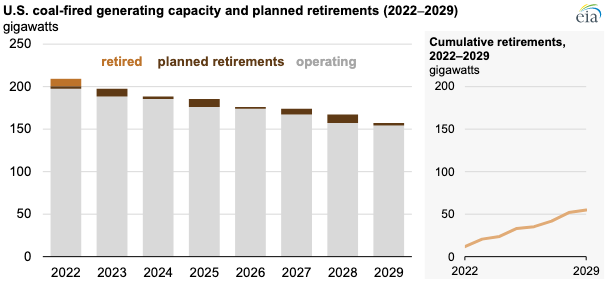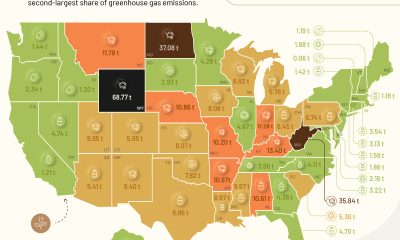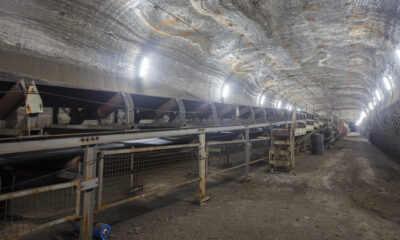Energy & Critical Metals
US coal-fired power retirements to slow from 2023 – report
Competition from natural gas and renewables will likely lead to the retirement of 23% of the US’s coal-fired capacity by end of 2029.
The post US coal-fired…

Competition from natural gas and renewable resources will likely lead to the retirement of 23% of the 200,568MW of coal-fired capacity currently operating in the United States by the end of 2029, according to the Energy Department’s Energy Information Administration (EIA).
Between 2012 and 2021, an average of 9,450MW of coal-fired capacity was retired each year. Coal retirements this year are on track to total 11,778MW, if expected retirements proceed as scheduled.
The pace of planned coal-fired retirements slows down after 2022, EIA said. The largest amount of capacity retirement expected over the next seven years is 9,842MW in 2028.
Have you read?
New application leverages AI to support coal plant conversion
Indonesia tests co-firing of coal and gas with biomass and hydrogen
Planned retirements continue to focus on relatively older facilities, which face higher operating and maintenance costs, which make them less competitive and more likely to retire. In addition, some coal-fired power plants must comply with regulations limiting the discharge of wastewater by 2028, which would require additional capital investment, likely influencing the decision to retire some of these coal-fired units.
The planned coal-fired retirements span 24 states, including several that do not currently have renewable portfolio standards or other clean energy policies.
Michigan, Texas, Indiana, and Tennessee have the most coal-fired capacity announced to retire through 2029, accounting for a combined 42%.

The type of coal used by retiring units is shifting from mostly bituminous, accounting for 68% of the US coal-fired capacity that was retired from 2011 to 2020, to mostly subbituminous- and refined coal-fueled plants, which account for a combined 68% of planned retirements between 2022 and 2029. Around 31% of the planned retirements over that time period are primarily fueled by bituminous coal.
Refined coal, which is made by mixing proprietary additives to feedstock coal, benefited from a tax credit that expired in early 2022. Of the 55,943MW of coal-fired capacity that primarily burns refined coal, 27% (15,269MW) has reported plans to retire between 2022 and 2029.
The last large (greater than 100MW) coal-fired power plant built in the United States was the 932MW Sandy Creek Energy Station in Texas, which came online in 2013. As of September 2022, developers have reported no plans to build new US coal-fired capacity.
Originally published on power-eng.com
The post US coal-fired power retirements to slow from 2023 – report appeared first on Power Engineering International.

Uranium Exploration Company Announces Additional Staking in the Athabasca Basin
Source: Streetwise Reports 12/22/2023
Skyharbour Resources Ltd. announced an update from its Canada-based Falcon Project along with additional…
Tesla Launches New Mega Factory Project In Shanghai, Designed To Manufacture 10,000 Megapacks Per Year
Tesla Launches New Mega Factory Project In Shanghai, Designed To Manufacture 10,000 Megapacks Per Year
Tesla has launched a new mega factory…
Giving thanks and taking stock after “a remarkable year”
An end-of-year thank you to our readers, industry colleagues and advertisers before Electric Autonomy breaks from publishing until Jan. 2
The post Giving…


















